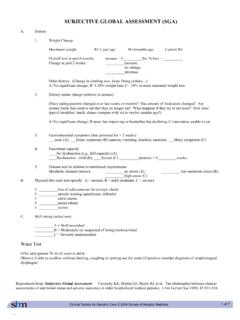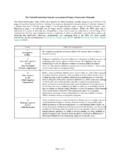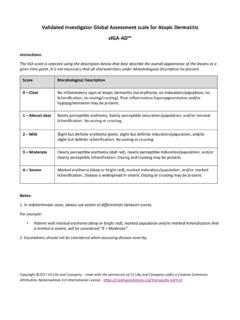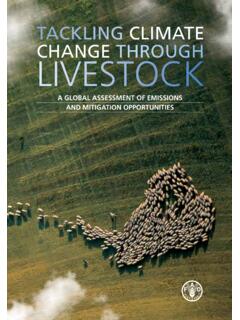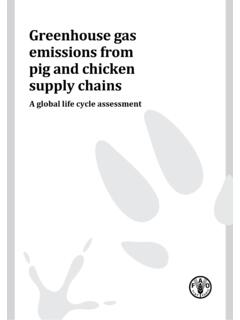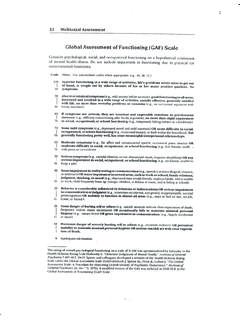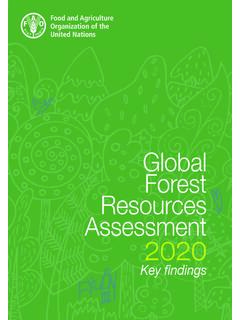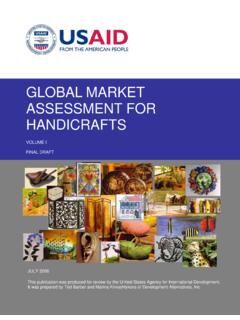Transcription of Terms and Definitions - FAO
1 FOREST RESOURCES assessment WORKING PAPER 188 Terms and Definitions FRA 2020 Terms and Definitions FRA 2020 FOOD AND AGRICULTURE ORGANIZATION OF THE UNITED NATIONS Rome, 2018 The Forest Resources assessment (FRA) Working Paper Series is designed to reflect the activities and progress of the FRA Programme of FAO. Working Papers are not authoritative information sources they do not reflect the official position of FAO and should not be used for official purposes. Please refer to the FAO forestry website ( ) for access to official information.
2 The FRA Working Paper Series provides an important forum for the rapid release of information related to the FRA programme. Should users find any errors in the documents or would like to provide comments for improving their quality they should contact global Forest Resources assessment FAO has been monitoring the world s forests at 5 to 10 year intervals since 1946. The recent global Forest Resources Assessments (FRA) have been produced every five years in an attempt to provide consistent approach to describing the world s forests and how they are changing. During this period, the scope of FRA has evolved from timber-focused inventories to more holistic assessments that seek to respond to increasing information needs related to all of the aspects of sustainable forest management.
3 At the same time, countries role in the FRA data collection process has been strengthened and the country reports developed by the National Correspondents, their alternates and other national contributors have become the cornerstone of the process. FRA 2020 reporting has been adapted both in Terms of scope and reporting periodicity to better respond to recent development in the international forest policy arena, such as the Agenda 2030 for Sustainable Development, United Nations Strategic Plan for Forests 2017-2030 (UNSPF) and the Paris agreement. Furthermore, the reporting content has been streamlined and a new on-line reporting Platform developed, to make the reporting more efficient and to decrease countries reporting burden.
4 All these changes have been made with the support of international experts consulted during the Seventh Expert Consultation on FRA, held in Joensuu, Finland in June 2017. This document intends to support the FRA 2020 National Correspondents in their work of coordinating the preparation of the FRA 2020 Country Reports by providing a comprehensive list of Terms and Definitions as well as explanatory notes for FRA 2020 reporting variables. The global Forest Resources assessment process is coordinated by the Forestry Department at FAO headquarters in Rome. The contact person is: Anssi Pekkarinen Senior Forestry Officer FAO Forestry Department Viale delle Terme di Caracalla Rome 00153, Italy E-mail: Readers can also use the following e-mail address: More information on the global Forest Resources assessment can be found at: TABLE OF CONTENTS Introduction.
5 1 Structure of the document .. 2 1 Forest extent and changes .. 4 1a Extent of forest and other wooded land .. 4 1b Forest characteristics .. 5 1c Annual forest expansion, deforestation and net change .. 6 1d Annual reforestation .. 7 1e Specific forest categories .. 7 1f Other land with tree cover .. 8 2 Forest growing stock, biomass and carbon .. 10 2a Growing stock .. 10 2b Growing stock composition .. 10 2c Biomass stock .. 11 2d Carbon stock .. 11 3 Forest designation and management .. 13 3a Designated management objective .. 13 3b Forest area within legally established protected areas and forest area with long-term forest management plans.
6 15 4 Forest ownership and management rights .. 16 4a Forest ownership .. 16 4b Management rights of public forests .. 17 5 Forest disturbances .. 19 5a Disturbances .. 19 5b Area affected by fire .. 19 5c Degraded forest .. 20 6 Forest policy and legislation .. 21 6a Policies, Legislation and national platform for stakeholder participation in forest policy .. 21 6b Area of permanent forest estate .. 21 7 Employment, education and NWFP .. 22 7a Employment in forestry and logging .. 22 7b Graduation of students in forest-related education .. 24 7c Non wood forest products removals and value .. 25 8 Additional Terms and Definitions .
7 26 FRA 2020 Terms AND Definitions 1 Introduction FAO has been coordinating global forest resources assessments every five to ten years since 1946. The assessments have to a great extent contributed to the improvement of concepts, Definitions and methods related to forest resources assessments. Strong efforts have been made to harmonize and streamline reporting with other international forest-related processes within the framework of the Collaborative Partnership on Forest (CPF), as well as with the partner organizations of the Collaborative Forest Resources Questionnaire (CFRQ) and the scientific community, all in order to harmonize and improve forest related Definitions and reduce reporting burden on countries.
8 The core Definitions build on earlier global assessments to ensure comparability over time. Whenever new Definitions are introduced or old Definitions modified this is done taking into consideration recommendations from experts in various fora. Variations in Definitions , however minor, will increase the risk of inconsistency in reporting over time. High importance is thus given to ensure the continuity of the Definitions as applied in previous assessments in order to allow consistency of data over time whenever possible. The global Definitions are in a sense compromises and their application is subject to interpretation.
9 Reducing national classifications to a set of global classes is a challenge and sometimes assumptions and approximations must be made. In order to compare and combine data from different sources, it is important to use statistics that are collected using comparable terminology, Definitions and measurement units. This working paper includes the Terms and Definitions applied in the country reporting process for FRA 2020 and should be regarded as an authoritative document on the Terms and Definitions . The working paper can be used in meetings and training at all levels aiming to build national capacity for forest resources assessment and reporting in general.
10 For more details on FRA Programme, please see: FRA 2020 Terms AND Definitions 2 STRUCTURE OF THE DOCUMENT The Terms and Definitions are structured according to the FRA 2020 country report s seven main reporting tables (Table 1). The underlying rationale for this is that the context in which the definition is placed is of great importance for the understanding of the definition. Further, the Definitions often build on each should therefore be displayed in the right context. Definitions are provided for all Terms and categories of the country reports. In addition, Definitions for a number of closely related general and supplementary Terms are provided.










